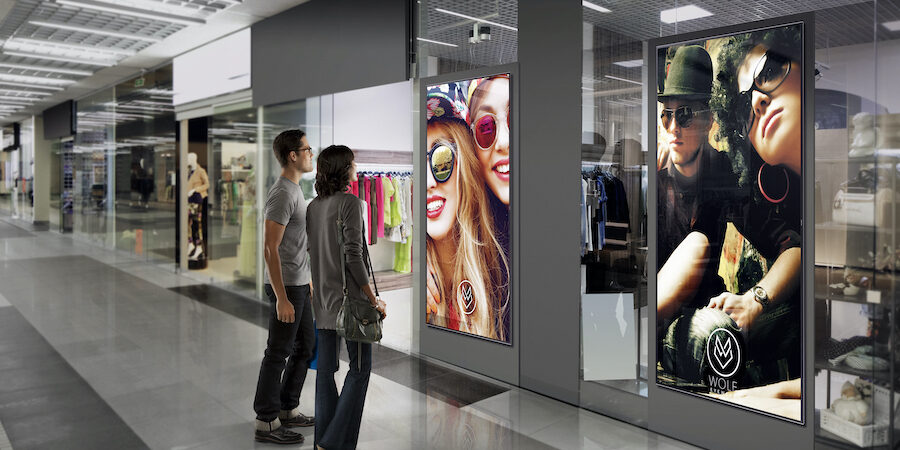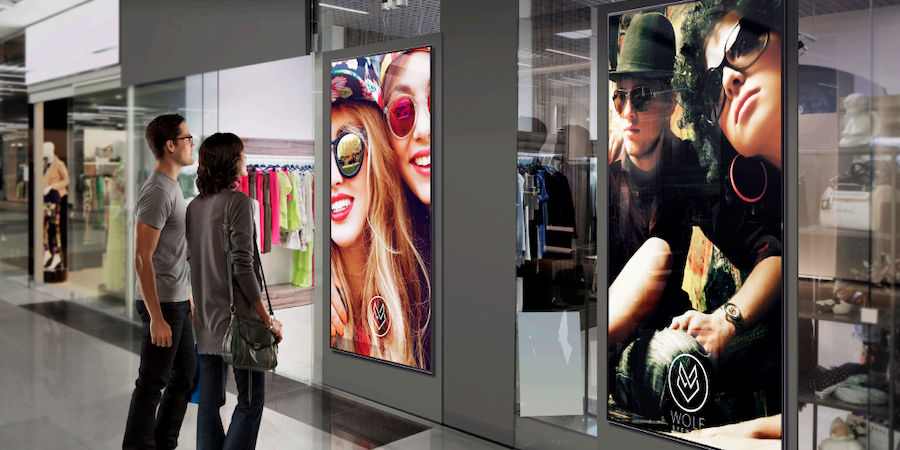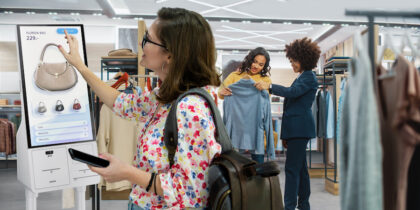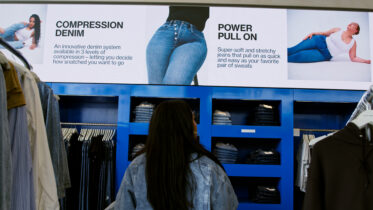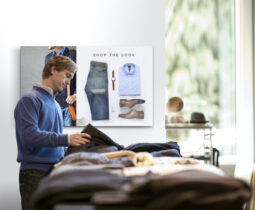Imagine a storefront that is all digital — a visually engaging beacon that is as changeable as it needs to be and can serve different purposes at different times of day. The identifying sign for the store brand is digital, as is the rest of the facade — making the storefront one big digital sign.
Digital store facades are not an entirely new idea. Earlier versions of relatively low-resolution LED displays started supplanting neon and replacing back-lit plastic signs many years ago. The technology had its limitations, though — notably the high cost and maintenance demands of early-version sunlight-readable displays.
Now there are few limits to how LED technology can be used in storefront displays to drive foot traffic and sales and build top of mind awareness and affinity for retail brands.
Digital facades
Outdoor-rated direct view LED, such as the XPR series, is inherently modular in its physical design, so displays can be stacked and tiled in configurations that fill as much of a retailer’s front facade as desired. LED shopfront signage can be vertical, horizontal or both — creating a seamless, full color, full motion canvas that’s unmissable to shoppers. Content can vary from subtle mood-setting animations featuring the store brand, to aggressive call-to-action marketing that can pack far more messaging into a sign than a printed poster.
The future of retail is digital
Get your free guide to growing your retail business by adopting future-proof, ecommerce technology. Download Now
Some retailers are implementing hybrid installations with more conventional entryways and shop windows augmented by a full motion LED header spanning the area above the entrance. Others have large LED walls flanking the entrance — again doing everything from establishing brand and mood to promoting special sales.
Inside malls and other enclosed spaces, savvy designers have used direct view LED to create curved archways and even digital canopies with ambient visuals.
Window displays
High-brightness LED-backlit displays in windows allow retailers to maintain the character of their exterior design, and, in some cases, remain aligned with local sign and planning bylaws. Large format displays provide an opportunity to show rich, full HD or 4K visuals for new or featured products, ideally inviting passing shoppers inside. Unlike printed material, which can only show one message at a time, digital displays can be scheduled to run a nearly infinite series of promotional and branding messages.
The high brightness aspect of these screens is important, particularly for retailers operating outside of enclosed malls. Conventional LCD displays are not equipped with the necessary lighting power to cut through the glare of direct sunlight, and they also aren’t engineered to handle the heat load of midday sun. It takes specifically engineered commercial LED storefront signs to handle that task and work happily in that challenging environment.
Screens facing outside can have a big impact on influencing consumers to come inside, but one drawback is the blank metal or plastic backside of these displays that shoppers see when inside the store and looking out. To address that, Samsung has cleverly developed an impossibly thin two-sided display that has a super high-bright display facing outside, and a still bright second screen facing inside, in view of shoppers. Different content can be scheduled to each side.
Outside displays
Fully outdoor-rated displays embedded in storefront walls, on totems and positioned in quick service restaurant (QSR) drive-thru lanes share the engineering qualities of window-based displays, but are also designed to handle extremes in heat and cold, as well as to block airborne dust and grime and prevent moisture from rain or snow seeping inside enclosures and damaging sensitive electronics.
Standalone displays
The staple of digital signage in retail has been standalone displays. They’re a more efficient and cost-effective promotional tool than print because of production costs, time and staffing requirements, and carbon implications of continuously printing, shipping and installing material. The beauty of digital is that it can be updated in an instant with software like MagicINFO Cloud, and even automated when predesigned promotions templates are tied into the data from systems handling sales and inventory. Imagine the benefits of automatically removing a sales promotion message as your point of sale (POS) and inventory systems indicate dwindling stocks.
The largest commercial displays are being used for branding and store design, leveraging the visual vibrancy and clarity delivered by supporting technologies like HDR10+ and quantum dots, the enhancement film that turns a standard digital display into a premium QLED display.
Touch overlays of any size turn regular displays into interactive stations that serve a variety of retailing needs. Using touch, consumers can:
- Search for product, aisle and shelf locations in large footprint stores, or find stores in a mall.
- Drill down for deeper detail on complex products.
- Virtually wander an endless aisle, discovering products not stocked at the retail location, but available for ordering and either in-store pickup or delivery.
Inside feature walls
Narrow-bezel LCD video walls have been used for years by retailers as feature displays to drive product awareness and set the mood for a store and its shoppers, notably in the fashion sector. Tiling a series of LCDs into an array creates a crisp, ultra-high-resolution visual canvas for store marketers and merchandisers.
As the pitch of indoor direct view LED technology has narrowed and costs have dropped, that fully seamless technology has started finding its way into retail environments where commercial designers are converting entire feature walls — corner to corner, floor to ceiling — into active media canvases. They’re wrapping the four sides of support columns, and introducing gentle curves into video walls that could only be flat with LCD.
Samsung’s The Wall for Business uses microLED technology to offer a premium viewing experience with rich, crisp imagery at a massive scale. The Wall’s immersive visuals captivate customers and evoke emotional responses that help drive sales and build brand recognition. Its shock-resistant technology makes it a great option for busy retailers who want a storefront display that will last.
Store operations
The now-common mantra of retail strategists is that experience is everything. Although much of that experience is defined by how the store looks and how shoppers are greeted and treated, it’s also about how the store works.
In environments such as QSRs or service-based retailers, store managers are using digital screens as replacements for printed menu boards, so menu options and prices are accurate. They’re integrating screens into systems that manage lineups at checkout and customer service areas, and notifying shoppers and diners when self-serve or mobile order pickups are ready.
Behind the scenes, retailers are using screens to relay human resources-initiated and required messages, elevate product knowledge and motivate staff. In some environments, touchscreens are also providing self-guided training for new hires, or refreshers for existing staff.
As normal as lighting
It’s rare now to see retail stores that are not using digital signage in some way, and while the technologies and applications are constantly evolving, it’s clear digital signage is becoming as common a part of the infrastructure as the lighting on the walls and ceilings.
Brighten your storefront and inform shoppers with today’s most comprehensive direct view LED portfolio on the market. And find everything you need to know about choosing your LED displays for optimal viewing, indoors and out, in this free white paper.
